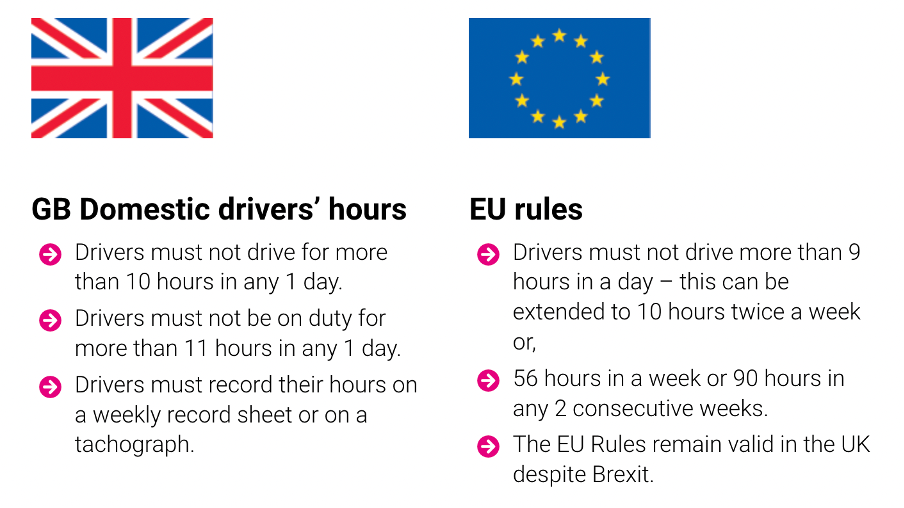What are the maximum hours a driver can work? There are driving for work laws in the UK, which limit the amount of driving that employees can do each day. There are also laws that set out minimum rest periods. The set of rules that apply to your drivers will depend on various factors, generally relating to the vehicle itself.
If you employ or manage drivers, it’s vital therefore that you are fully aware of which sets of rules apply to your drivers, as this will underpin key areas of your organisation’s driving for work policy.
Driver fatigue is a serious and increasingly common issue – it’s responsible for 1 in 5 incidents. An employer should not do anything to exacerbate fatigue. That’s why drivers’ hours laws are so important, and why your organisation needs to ensure it’s compliant in this area.
In the event of an incident involving one of your drivers, you must be able to prove that you took all reasonable steps to protect your driver and other road users, including following drivers’ hours legislation. That’s why you need a driving for work policy – it’s your organisation’s way of demonstrating a clear commitment to managing driver safety.
What are the drivers’ hours rules?
There are two main sets of driving hours laws that apply in the UK – the EU rules and the GB domestic rules. There are rules on drivers’ hours for both goods and passenger vehicles.
There are penalties including large fines, and even custodial sentences, for breaking the rules.
So, if you manage drivers, you need to know which set of rules to follow.
The easiest way to figure this out is to assume the more onerous EU rules apply, unless there is an exemption. If the EU rules apply, then all driving will need to be recorded on a tachograph.
However, if there is a valid exemption, then the GB domestic rules will apply. The single biggest exemption to the EU rules is that vehicles under 3.5t GVW are not covered. That means most vans are exempt and will need to follow the GB domestic rules, unless they are towing.
Vans used for towing might still be exempt, but for a different reason – you’ll need to check.
As a starting point, the core elements of the two sets of drivers’ hours rules are:
The Working Time Directive also applies to drivers’ hours. It states that workers in the road transport industry cannot opt out of the WTD, except for drivers of vehicles under 3.5 tonnes using the GB domestic rules.
When do drivers need breaks?
If the EU rules apply, then your drivers must take:
- At least 11 hours rest each day
- Breaks totalling 45 minutes after a maximum of 4.5 hours driving
- An unbroken rest period of 45 hours every week (this can be reduced to 24 hours every other week)
If the GB domestic rules apply, then your drivers:
- Must not drive for more than 10 hours each day
- Must not be on duty for more than 11 hours in a day when driving
- Must record hours on a weekly record sheet or tachograph
- Must take a break of at least 30 minutes after 5.5 hours of driving if they drive a passenger vehicle
Driving when tired impairs the judgement and reaction time of drivers, causing them to react slowly and brake late – and it’s a major factor in a lot of rear end incidents. It also affects coordination, resulting in a variance in speed, which in itself can be dangerous when other drivers are not expecting it.
Tired drivers also have what are known as microsleeps, which last from a fraction of a second to 2 seconds. At 56 mph a van travels at 25m per sec, so microsleeping for 2 seconds means 50m of unconscious travel.
Crashes caused by drivers falling asleep tend to be high-speed impact incidents, so the risk of death or serious injury is high. This is a risk that your organisation needs to manage. A key element of managing this risk is good driver scheduling which adheres to legal requirements regarding drivers’ hours and breaks.
If you are looking for information to share with your drivers, the National Highways Van Driver Toolkit resource on driver fatigue is free and it has a number of best practice tips for safer driving.
How many hours can a van driver work?
Van drivers will probably be driving under GB domestic rules, as vehicles below 3.5t GVW are exempt from EU rules.
That means your van drivers must not drive for more than 10 hours in any one day. They must not be on duty for more than 11 in any one day – that includes time spent loading up a van, or cleaning it, for example.
Van drivers also need to record their hours on a weekly record sheet or on a tachograph.
If you’re looking for further information on drivers’ hours rules for van drivers, take a look at the downloadable info sheet from the free resource for managers, The Van Driver Toolkit, or this training video – Van Driver Toolbox Talk on drivers’ hours. These resources are helpful, informative and designed be shared with your drivers.
How many hours can an HGV driver work in a week?
Under EU regulations, an HGV driver can drive for a maximum of 56 hours in a week. In addition, there are specific laws around how many hours someone can operate a heavy goods vehicle in a 24-hour period.
This article by Fleetcheck explains that an HGV driver must rest for a minimum of nine hours within a 24-hour period up to three times a week, which allows them to work three 15-hour days in the same week.
However, over a two week consecutive period, an HGV driver may not exceed 90-hours. So – if they work the maximum 56 hours in the first week, they can only drive a maximum of 34 hours the following week.
Understanding and obeying the driving for work laws in the UK is a crucial part of your job, as someone who manages drivers. Importantly – you need to be able to prove it.
Having a best practice driving for work policy means your organisation can prove to its drivers and to law enforcement that you are legal and compliant – and taking your road risk management responsibilities seriously.







